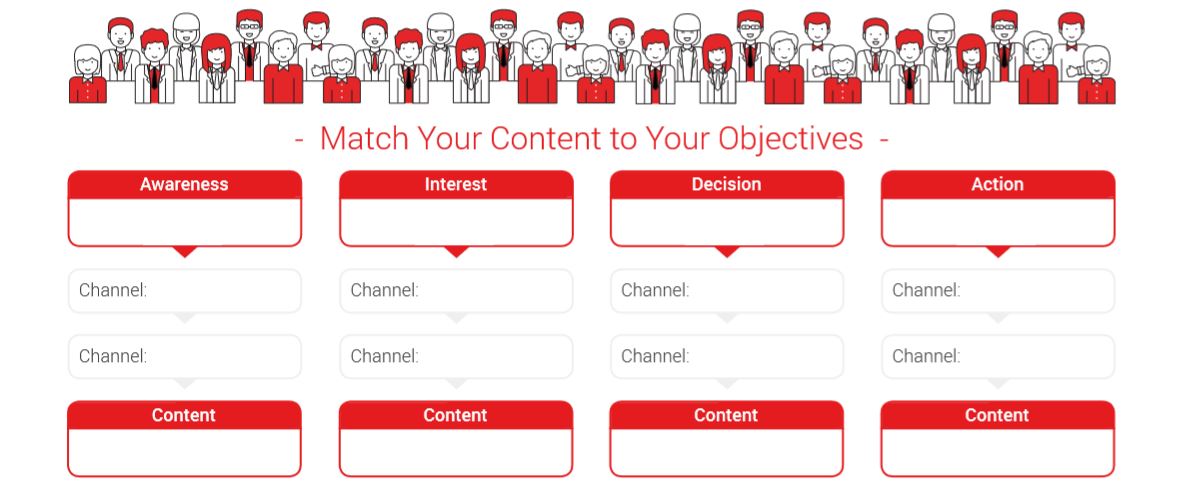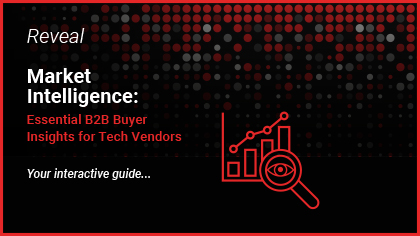You may be knocking it out of the park with your B2B content creation, but without the right distribution channels to scale up your efforts and reach the right audience at the right time, who’s going to see it?
This expert guide reveals everything you need to know about effective content distribution and lists the best digital channels at your disposal. Once you know how other content professionals leverage them, you’ll be better set up to design your own multichannel mix and get the most out of your content distribution efforts.
Ready to build a better demand generation and content marketing strategy? Get reading!
Reading time: 8 minutes

What is content distribution?
Content distribution refers to the practice of creating, curating and sharing content on various online platforms to reach a wider audience. The main goal of a content distribution strategy is to increase brand awareness and reach potential customers. It’s also used to educate and entertain people by providing valuable content related to the brand.
Having a content distribution strategy is essential for any digital marketing campaign and can be a great way to reach potential customers and increase brand visibility.
Why does content distribution matter?
Content distribution can help businesses to build relationships with their customers, establish brand credibility, increase their visibility and ultimately, drive more sales.
Content distribution can also help marketers to reach new customers and expand their reach. By expanding into different channels, businesses can increase their chances of being seen and found by their target audience. Furthermore, your content distribution efforts can help to build relationships with influencers and other industry leaders. This can help to increase brand awareness, attract more customers and create more word-of-mouth advertising.
The different types of content distribution channels
- Owned channels: The channels and platforms owned by your organization.
- Earned or shared channels: These are external third-party channels that are sharing content about your company.
- Paid channels: These are external sites where you pay for your piece of content to be promoted.
7 effective content distribution channels
Now that you understand the different types of content distribution and it’s important to select the right methods for your strategy, here are 7 effective content distribution channels for you to choose from:
1. Advertising
Don’t ignore the early stages of the demand generation process: advertising is a great way to raise the profile of your brand and the problems your products can solve. By selecting placements carefully, display and native advertising can provide a non-intrusive way to broadly raise brand awareness in a relevant context.
With spending for marketing automation expected to reach $15.7 billion by 2032, B2B marketers are embracing new forms of AdTech to simplify the buying process and deliver enhanced targeting capabilities along with greater message personalization.
One of the key drivers responsible for this change in behavior is the ability to precisely target groups or even individuals with highly relevant content. What’s more, you can cost-effectively resurface your message and content to prospects even when you don’t have their email address. Used in combination with social or other channels, this can provide a powerful boost to moving your prospects through the sales funnel.
For more information on how you can integrate programmatic advertising into your own channel tactics, check out InboxNEXUS.
Video advertising
In today’s digital age, visual content is becoming increasingly popular among marketers. Video advertising, in particular, has become a powerful tool for B2B marketers looking to reach their target audience. With the ability to convey complex ideas in a simple and engaging way, video advertising has proven to be an effective content distribution channel.
B2B marketers can use video advertising to take their audience on a deep dive into their product or service. Long-form content that may be difficult to explain in written form can be easily conveyed through video. By showcasing the product or service in action, B2B marketers can provide their audience with a better understanding of what they have to offer.
2. Email marketing
Email marketing is a consistently high performer. 77% of marketers saw an increase in email engagement from 2021 to 2022 while, according to Litmus, for every $1 spent on email marketing, you can expect a $36 average return.
However, sentiment is shifting – 41.5% of brands say that email marketing is very critical to business success, compared to 78% in 2020.
If that’s you, it’s time to evaluate your current content distribution strategy, because there are a whole load of benefits you could be missing out on, including:
- Audience segmentation and micro-targeted content campaigns
- Enhanced personalization including subject lines, body copy, layout and links
- Advanced testing capabilities to help inform your content distribution strategy
- Lead nurturing programs to accelerate your buyer cycle
What’s more, the results are almost immediate and your KPIs are easy to track and improve.
There are plenty of great examples of email newsletters out there to take inspiration from, such as The Hustle, Buffer and Phrasee.
3. SEO and SEM
Search engine optimization (SEO) and search engine marketing (SEM) are essential components of your B2B content marketing because they enable you to intercept prospects with your content at critical touchpoints. However, having a clear understanding of what pieces of content to assign to each tactic is essential for success.
By auditing your current content and assessing where each asset sits within your buyer cycle and content objectives, will help you make better-informed decisions.

SEO is most effective for attracting prospects to your brand by raising awareness and capturing interest.
With Google’s shifting algorithms, reaching the top ranking positions is a constant game of cat and mouse. However, there are things you can do to optimize your chances of your content reaching your target audience at optimum touchpoints.
Prioritize evergreen pieces of content that address top-of-the-funnel awareness, such as your long-form blogs for your SEO activity. If you have built your content creation and marketing strategy around your personas, you should incorporate long-tail keyword phrases, relevant keywords and pain points. But above all your SEO content should offer value to your target personas.
SEM is effective for precise targeting of prospects on the cusp of purchasing.
Search-optimized landing pages can draw prospects to your site, while paid search can guarantee your content is in front of the right people at right time. This makes SEM a vital part of demand generation as it drives bottom-of-the-funnel conversions.
Likewise with SEO, keyword research is essential if you are to identify need stage by search query, with greater precision. In your research you should identify:
- What keywords are relevant to your business?
- What keywords are prospective customers going to type into the search engine to find your business?
Once you’ve caught their attention through savvy use of keywords, it’s important you map out intelligent conversion paths. Driving ad clickers to specific landing pages provides the opportunity to leverage targeted messages to highly segmented audiences to optimize conversion rates. This is where your case studies, demos and other bottom-of-the-funnel format come into their own.
4. Take advantage of someone else’s audience
If your content marketing campaign objectives include building out your readership, tapping into existing online communities is a strong strategic move.
Third-party publishing platforms, such as Insights for Professionals (IFP), are perfect examples of third-party sites that could help you reach a wide audience of relevant prospects. Such B2B content hubs are the very places your prospect goes to find information specifically for their industry or problem. This makes it an ideal hub to publish mid-funnel whitepapers, eBooks and infographics that will be guaranteed to have a high level of exposure and engagement.
What’s more, high authority publishers have already established a credible relationship with their readership, therefore having your branded content aligned with other thought leaders and industry influencers will significantly impact the perceived value of your brand.
If you are partnering with someone else in this way, be sure that you have chosen carefully in terms of not only audience but tone of voice and content. The best relationships take time to develop – so plan long-term!
5. Guest posting
Similarly, guest posting is an excellent content distribution strategy that B2B marketers should consider adding to their marketing mix. This involves creating and publishing high-quality content on other websites or blogs that are relevant to your industry or target audience. By doing so, you can tap into an already established audience, drive traffic to your website and increase your brand awareness.
One of the main benefits of guest posting is that you can showcase your expertise and establish your authority in your industry. By creating informative and original content, you can position yourself as a thought leader and gain the trust of your target audience on an impartial platform. Additionally, guest posting allows you to reach a new audience and build relationships with other bloggers and influencers in your niche.
6. “Traditional” channels
Before you shred your printed collateral – we advise you not to ignore the old school channels! According to the Direct Marketing Association (DMA), direct mail has a 4.4% response rate, compare toan average of 0.12% for email.
While the speed of digital enables marketers to distribute blog content with greater efficiency and scale, there is a downside. With mass comes clutter, and as quickly as content is consumed – it’s deleted to make way for the next.
Perhaps this explains that despite living in a digital age, there has been an upswing in the use of direct mail. This is because it has one timeless quality we all yearn for – tangibility.
The key to deciding whether there’s a place for direct response in your B2B content distribution strategy is to carefully consider how this form can be leveraged to make your message even more powerful.
What’s more, be smart about how to integrate traditional with modern tactics, as you’ll need to devise integrated control mechanisms to keep track of cross-channel performance.
7. Social media channels
According to the Content Marketing Institute, 84% of B2B buyers will use social media platforms at some point in their buying process, which illustrates the importance social networks as a vital channel. Just like consumers, B2B buyers trust recommendations from peers and influencers over brands.
Circulating content via social media posts will improve your visibility, while linking to fresh content on your site will generate traffic and increase readership. Don’t rely on organic social alone – a targeted paid campaign can put your stuff right in front of the right people.
But social isn’t just for dissemination. You can use it to understand your target audience’s behaviors and preferences, social listening and lead generation as well as lead nurturing.
Conclusion
Using a combination of multiple types of content distribution channels will ensure maximum reach, but the more channels you incorporate into your plan, the more complicated it will be to manage and continuously monitor all the placements.
You should not underestimate the resource needed to manage multichannel campaigns. Ideally, you would need access to specialists in each of the channels, as well as content creators and analysts who can keep track of the data and make recommendations.
Outsourcing your B2B demand generation campaign to an agency is a straightforward way to gain access to expertise, experience and specialist knowledge without needing additional staff. Contracts that charge on a performance basis, for example pay-per-lead, mean the agency has a vested interest in delivering results and will proactively work to enhance and optimize your campaign’s performance.







